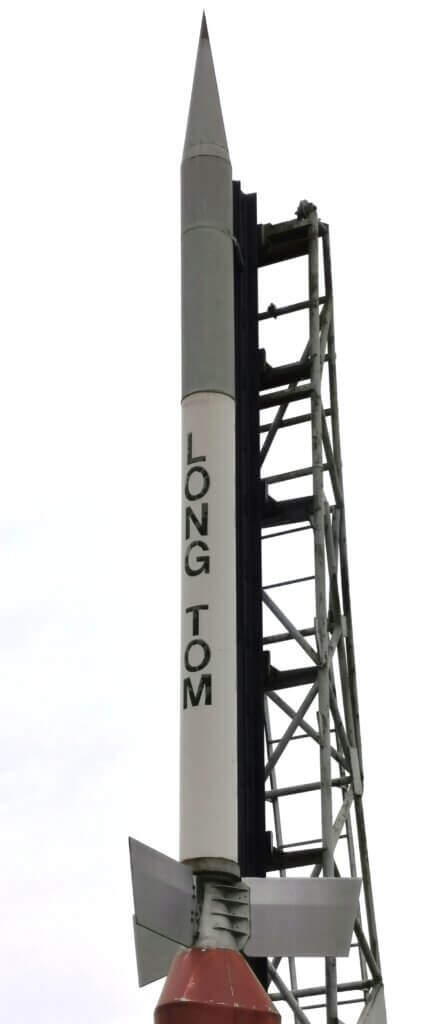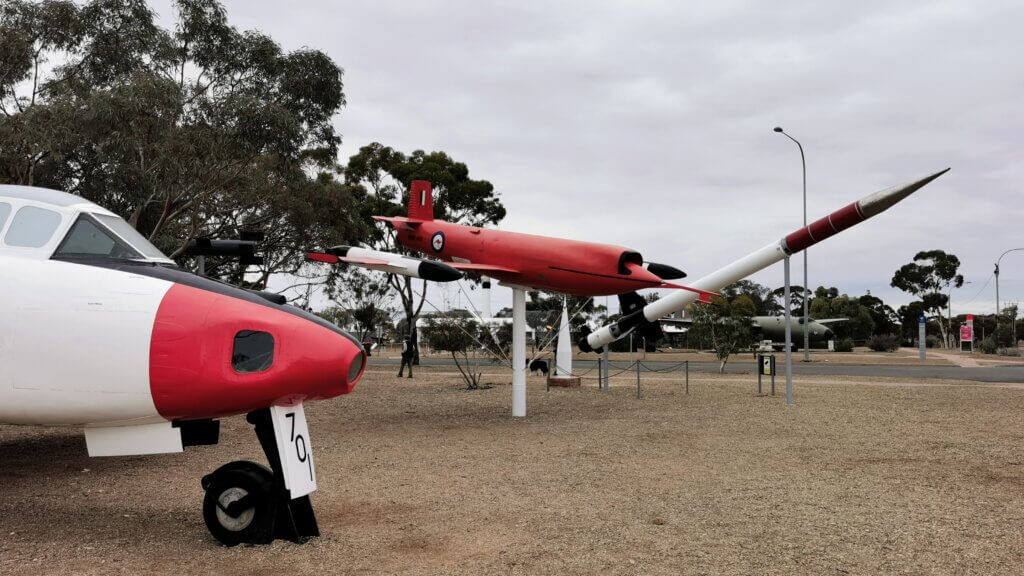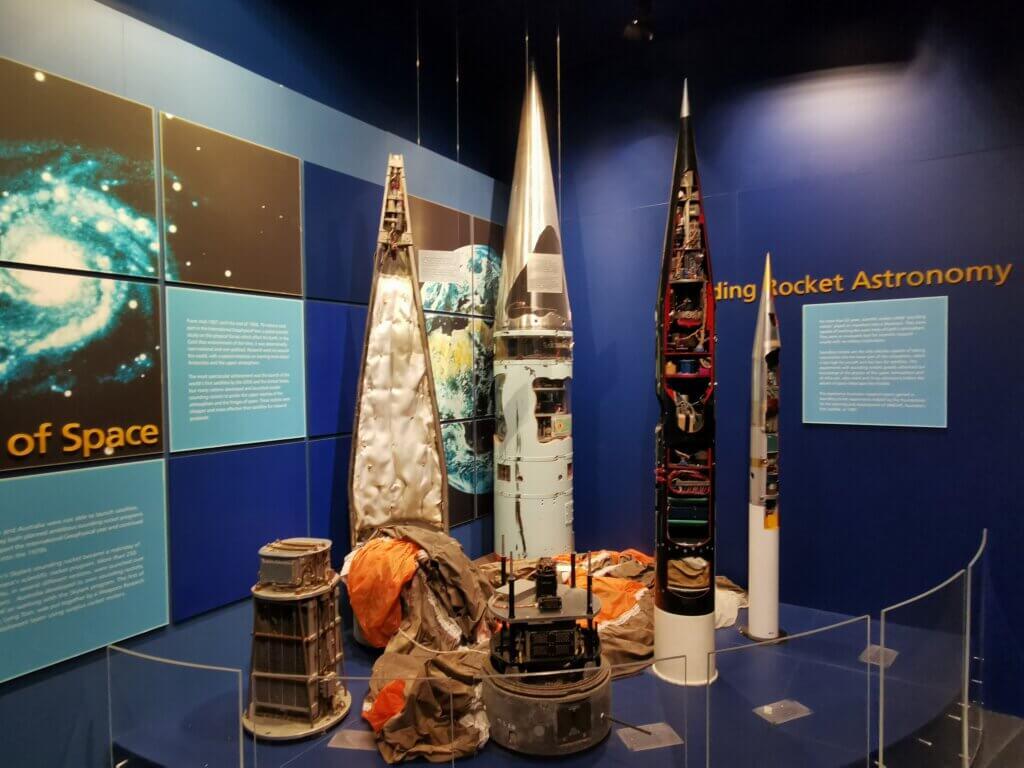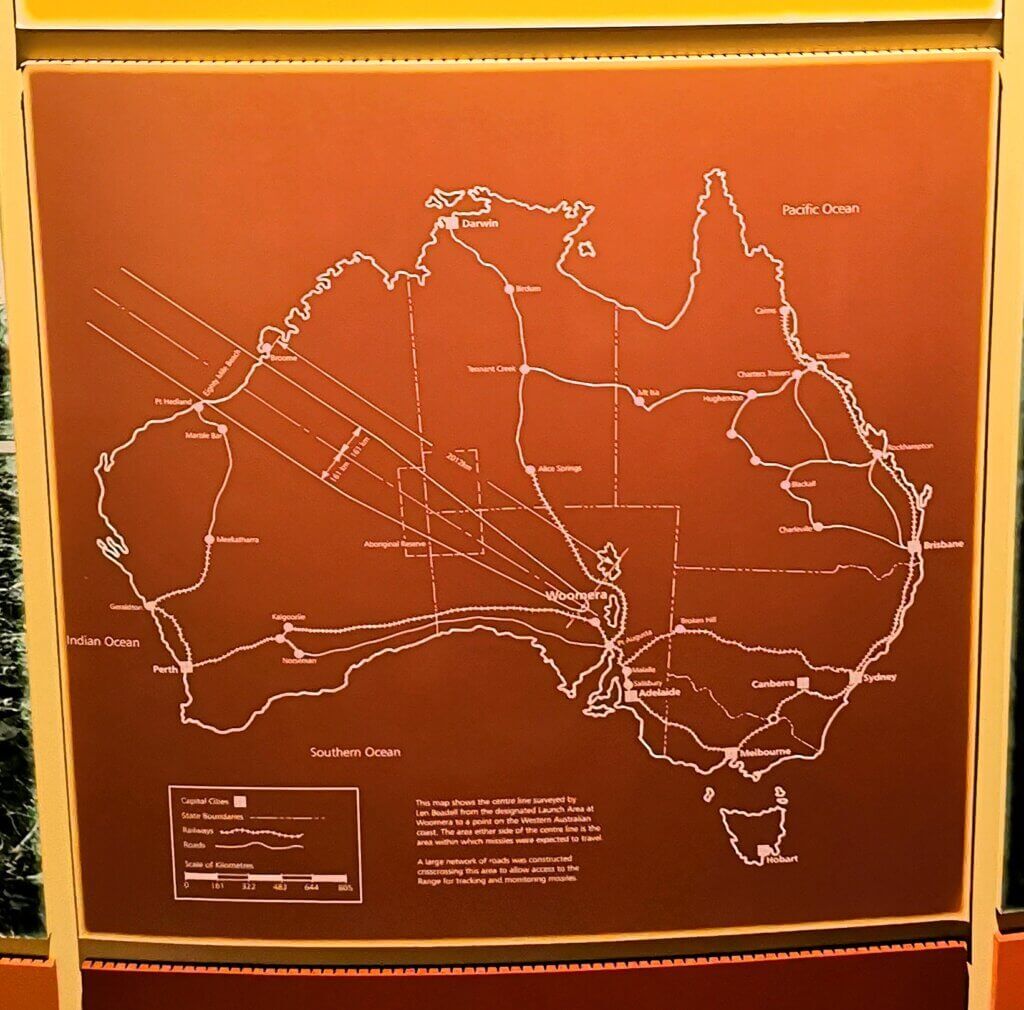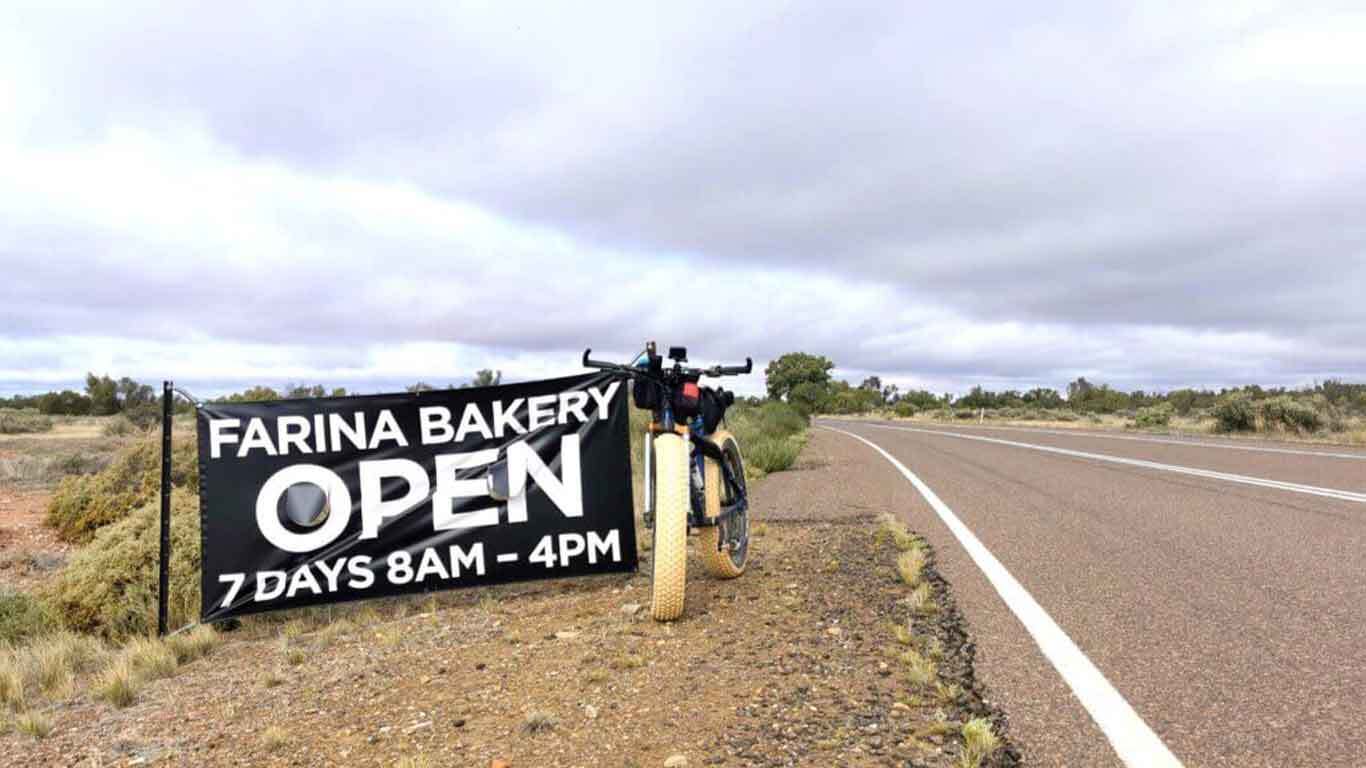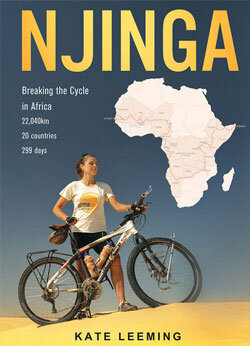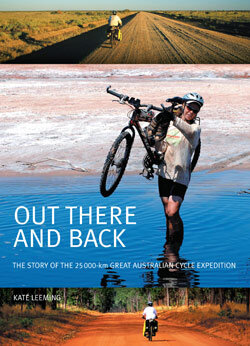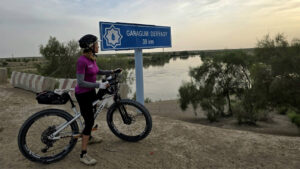Dates: 28th June – 3rd July
Marree – Port Augusta – Woomera: 575km
Total distance: 1961km
DAY 18 – Marree to Lyndhurst – 83km
It rained solidly the whole time we were in Marree and with no chance of the Oodnadatta Track opening for at least a week, possibly two weeks, I had to resort to Plan D. The team has to be in Coober Pedy by 11th July (to change filmmakers) and as there was no guarantee that the roads will be open in time for me to cycle the 400-odd km (4-day ride), I had no choice but to cycle all the way around via Port Augusta (on the south coast), a 900km+ route on the tarmac! Riding a fatbike on the bitumen is akin to driving a tractor instead of a Lamborghini!
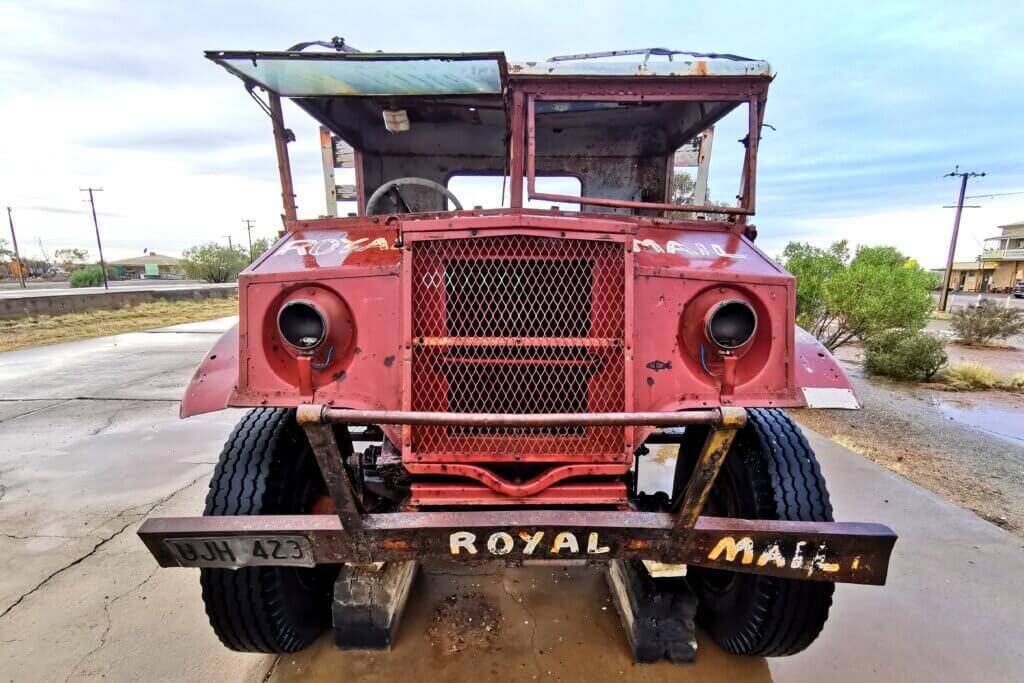
Before setting off, Gelareh and I did a little filming around town in the drizzly conditions. There were displays of different vehicles that worked the Birdsville Track – Tom Kruse’s Royal Mail truck, an old steam engine, a cart that would have been drawn by horses and a camel dray. There were three fairly rudimentary old mosques around town that were once frequented by the large Afghan population.
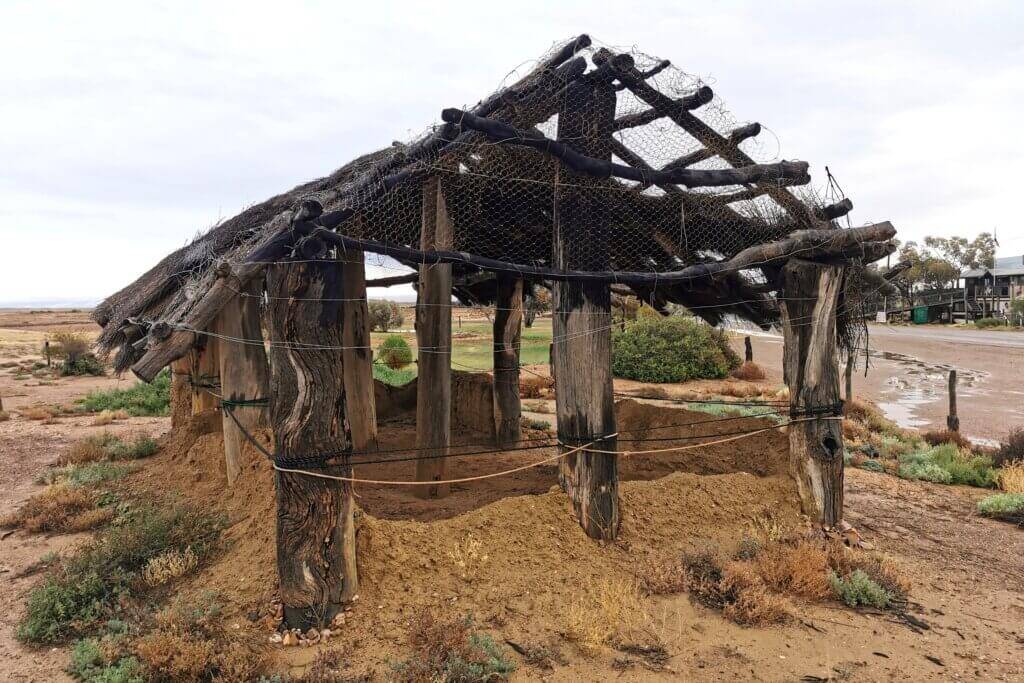
My 12cm wide tyres whirred over the tarmac as I set off on a dank, chilly morning, feeling a little despondent – there is no way I would have time to cycle the Finke River section that I had so meticulously planned either. Still, I wondered what kind of opportunities this new route would have to offer.
The first aim was to visit Farina, an historic settlement and train stop on the Old Ghan railway line. It was first settled in 1878 by a group of optimistic farmers believing they could grow wheat and barley, but the normal rainfall was never enough to support a viable grain crop. In it’s heyday, there was a population of 600 people with two hotels, an underground bakery, a bank, two breweries, a school, an Anglican Church and a brothel. The post office closed in the 1960s, the railway line closed in the 1980s and no one has lived there since 1967. However, in 2008, the Farina Restoration group started to restore the town, including the renowned underground bakery. Each year, a group of volunteer bakers work the traditional bakery for a few weeks.
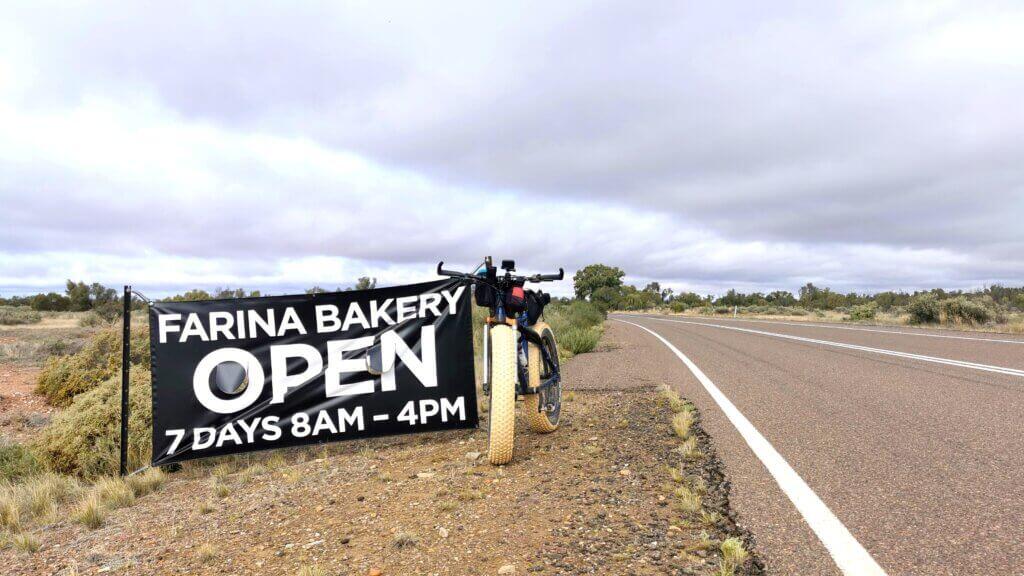
Just 55km south of Marree, we were keen to visit the underground bakery for lunch. The team went ahead and when I reached the first two turnoffs (the ruins of the town are two kilometres off the road), both were closed due to flooding. As I continued, I saw a vehicle drive down one of the tracks and then I noticed a white vehicle near the main homestead and thought it was one belonging to the team. I decided to take another track into the village but quickly my bike was becoming clogged with stick clay-like mud. I switched on my all-wheel drive system and kept heading towards the signs. At one point I cycled along part of the old railway track. I found the main road, but it was under water and I ventured cross-country through the bushes, dragging over the quagmire and occasionally finding some pieces of rideable track. At the homestead I found some volunteers who confirmed that the bakery was closed and that they had seen my team waiting for me at another closed entry point further along the tarmac road. I got one of the volunteers to send a message to my team on his two-way radio and I slowly worked my way, mostly beside the muddy track until I reached the team. By then I was covered and more worryingly, my bike was clogged with mud.
At least the afternoon session brought some sunshine, but now it was a strong headwind that made me earn every inch of the way to Lyndhurst. Gelareh’s and my tents were still saturated from the rain in Marree, so we took a room in the hotel. Lyndhurst is a very small place at the junction of the Strzelecki Track (also currently closed) and the Explorers’ Way that we were following.
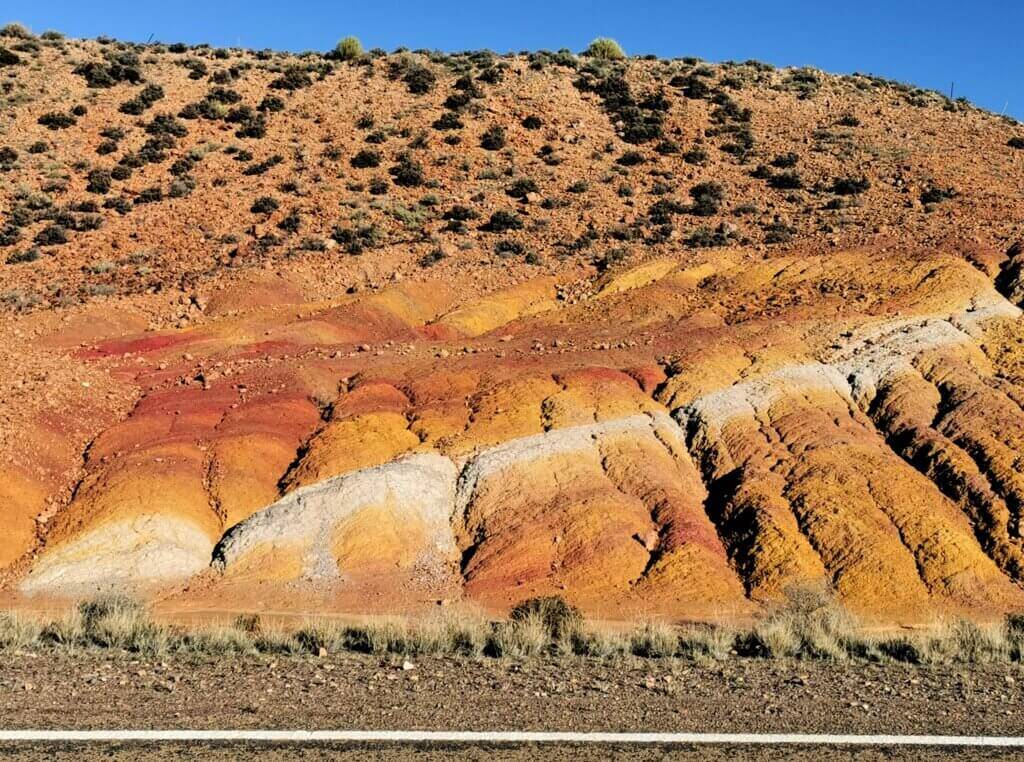
DAY 19 – Lyndhurst to Parachilna – 107km
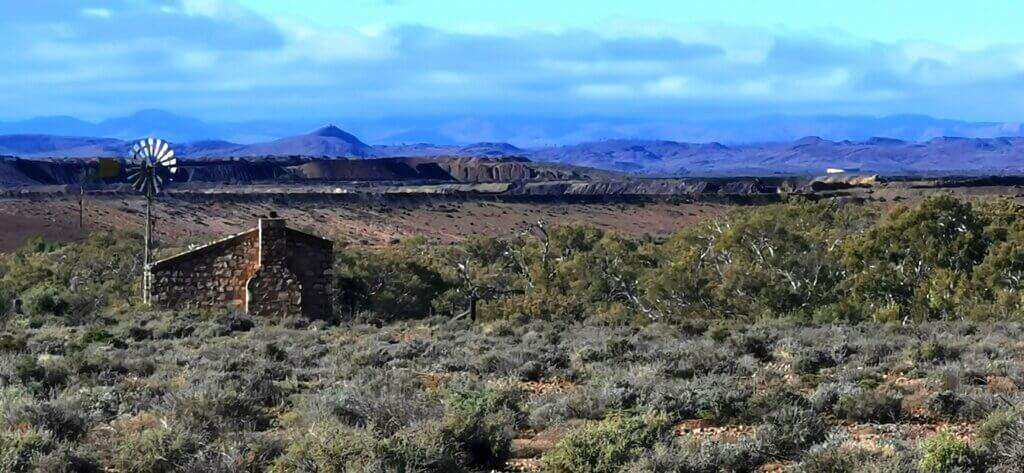
From Lyndhurst, I entered the northern Flinders Ranges, following the Old Ghan line to Copley where Martin and Sandra knew of another bakery – and this one was open! The specialty was quandong products. Quandongs grow in the semi-arid bush across the country and I remember having quandong jam growing up in the Western Australian wheatbelt. Also known as the native peach, the bakery owners, Shirl and her son, told me that the local Aboriginal women harvest, prepare and dry the flesh to sell to the bakery. I helped Shirl bake some quandong turnovers before loading up with some excellent freshly made pasties that fuelled me for the rest of the day.
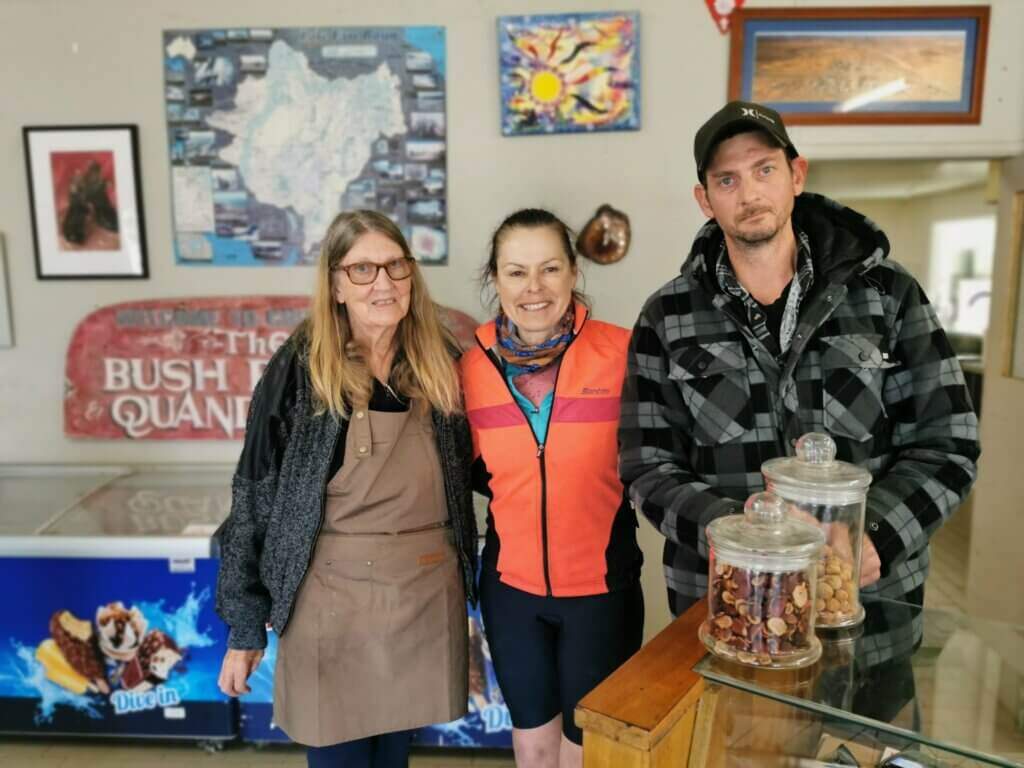

I really enjoyed the afternoon ride; following beautiful river gum-lined creeks and crossing many that were recently flooded; tracking alongside the Old Ghan, down the western side of the great wall of ancient Flinders Ranges. I saw lots of wildlife – eagles, cockatoos, emus, kangaroos and wallabies. It was also noticeable that I had entered sheep country whereas farther north, it had all been cattle grazing.

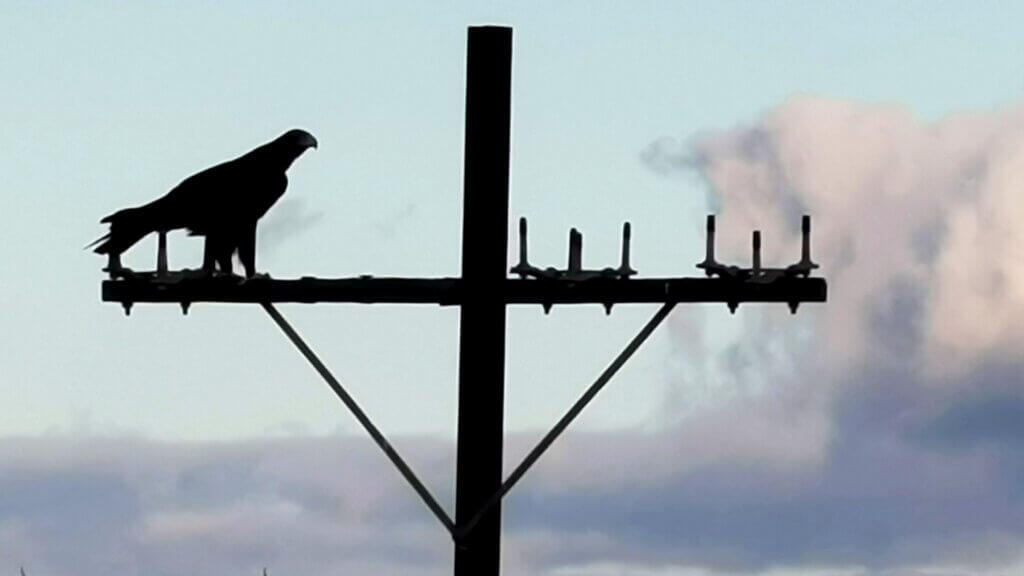
There was a serious chill in the air as I arrived at last light in Parachilna. The town is tiny but surprisingly, the pub, the Prairie Hotel was a fine dining affair. There were all sorts of game on the menu and they even brew their own beer – amazing food!
DAY 20 – Parachilna to Hawker – 91km
The Flinders Ranges were stunning all day though I struggled into a head wind for most of it.
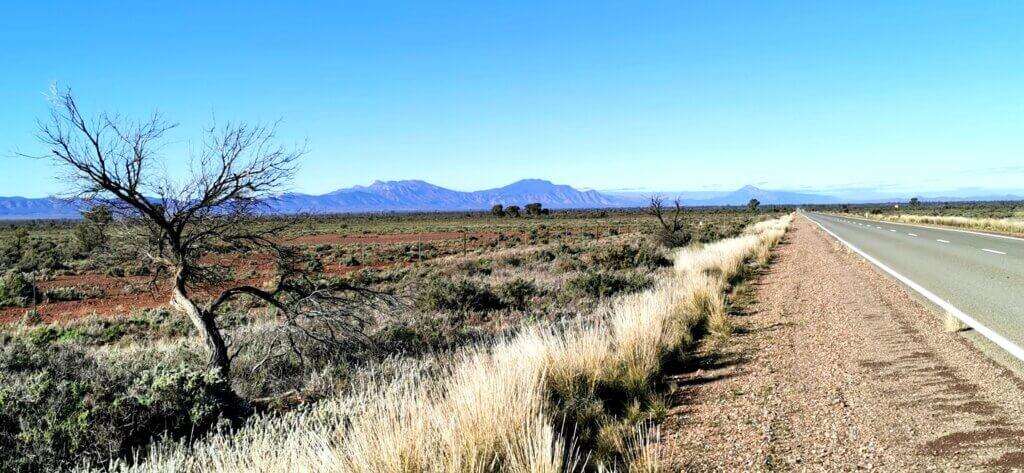
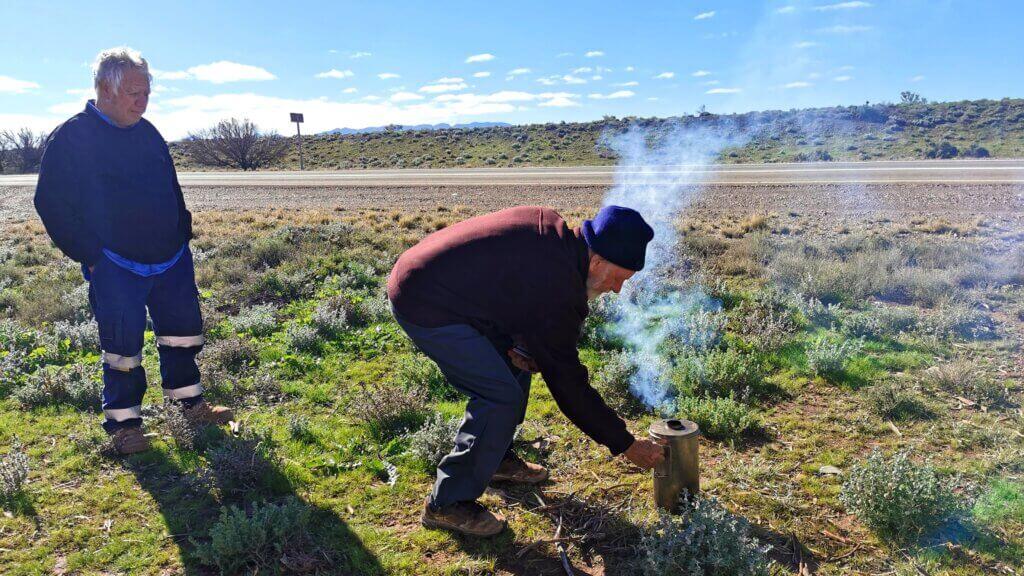
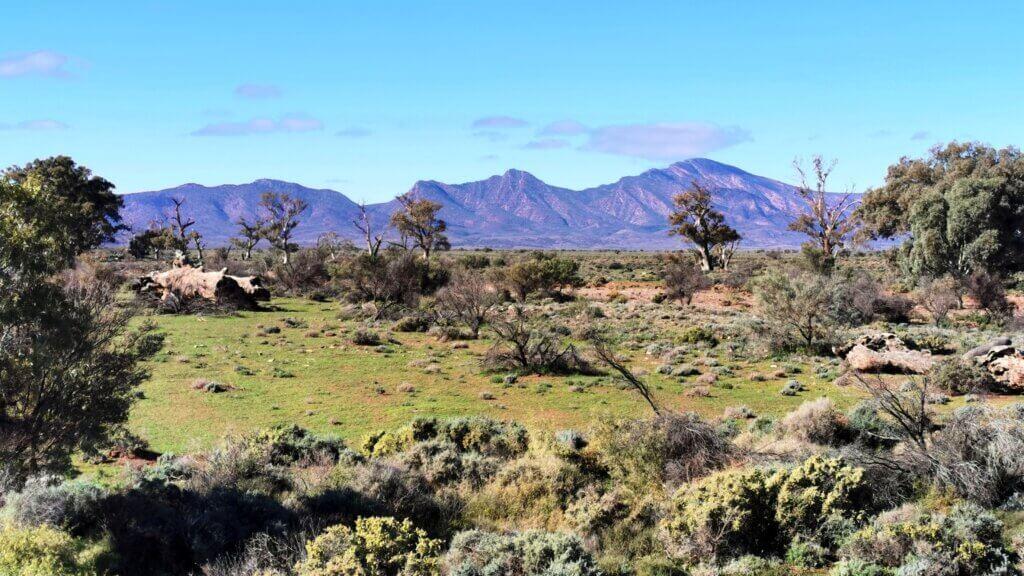
The ranges run as north-south ridges. In the final 17km section I climbed a small (easy) pass over one of the ridges and crossed the Heysen Trail before reaching Hawker, a very tidy town of 482 people.
DAY 21 – Hawker to Port Augusta – 109km
The final day into Port Augusta was a long, but there was great reward for effort. I passed through many smaller sheep farms, stunning creeks and several old ruins on the way to Quorn.
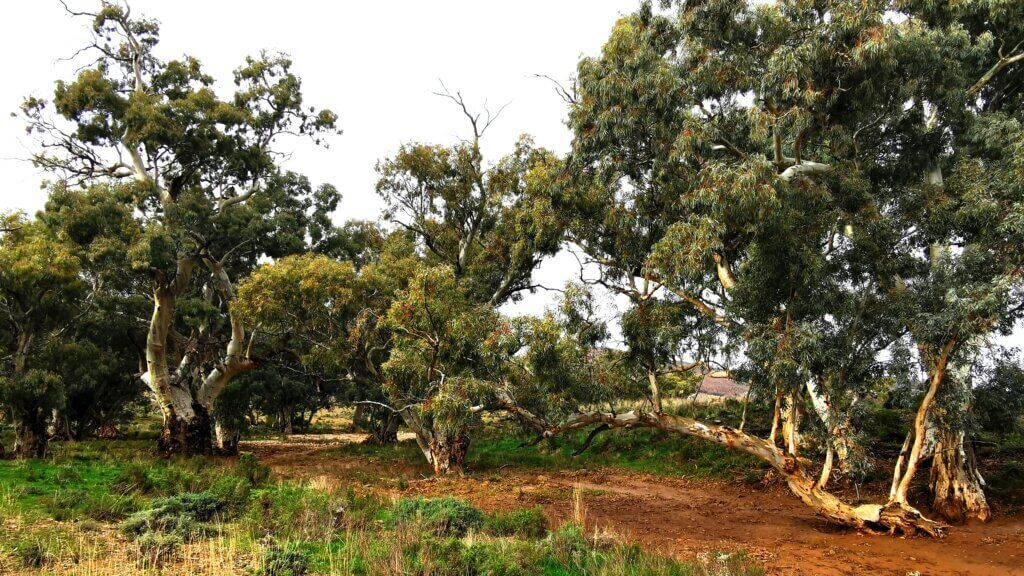
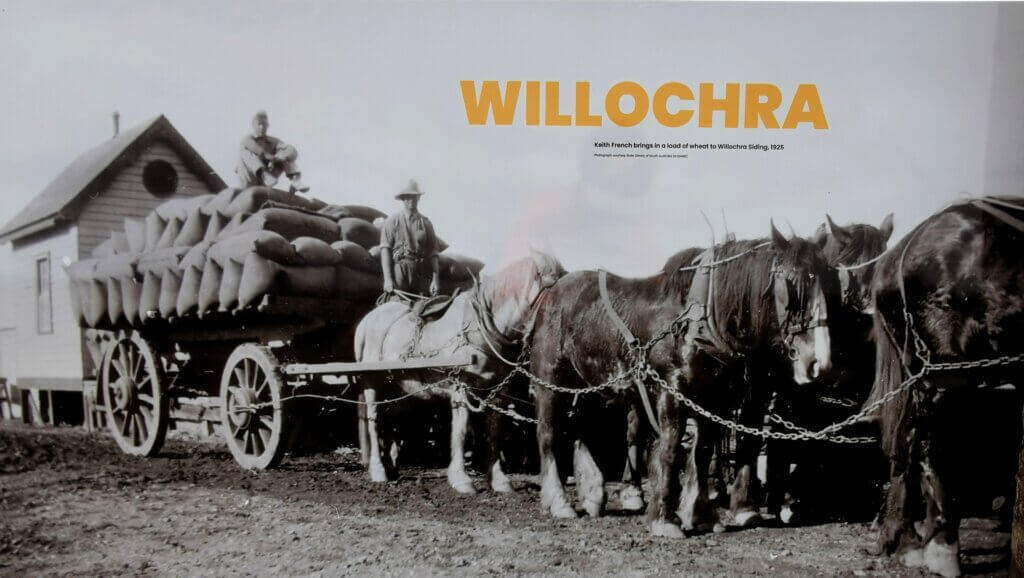
Historically, Quorn is one of South Australia’s most important railway towns; a major stop on the Old Ghan and later the trans-continental (west-east) railway also passed through. Looking around all the old buildings, it is easy to see why several directors chose Quorn as a movie set. Films such as Gallipoli, Sunday Too Far Away, The Water Diviner and The Shiralee all feature scenes filmed in Quorn.
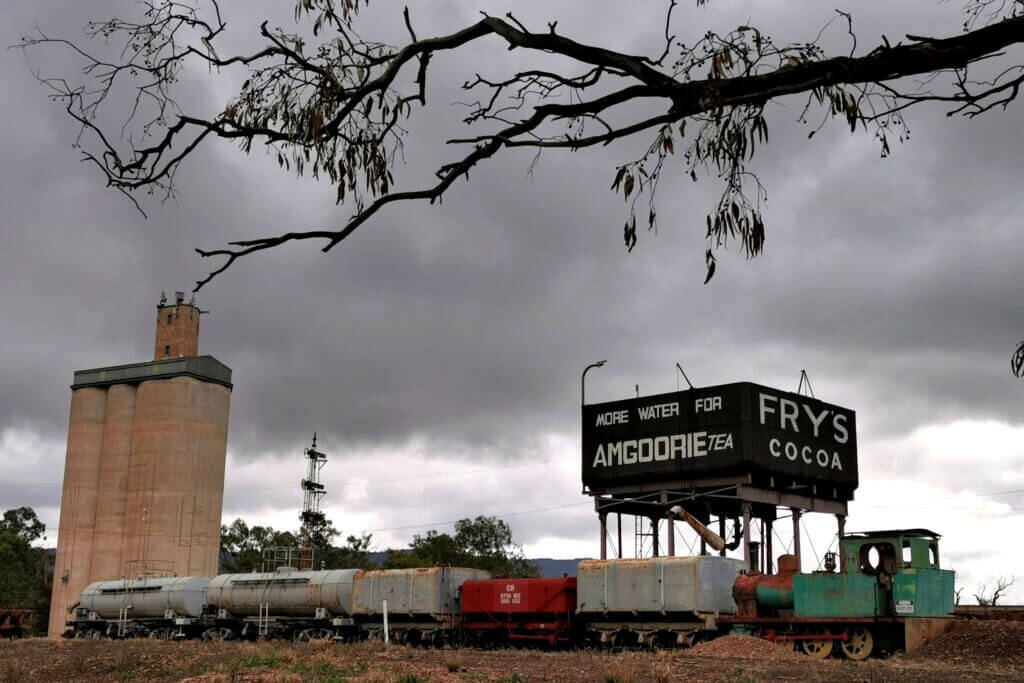
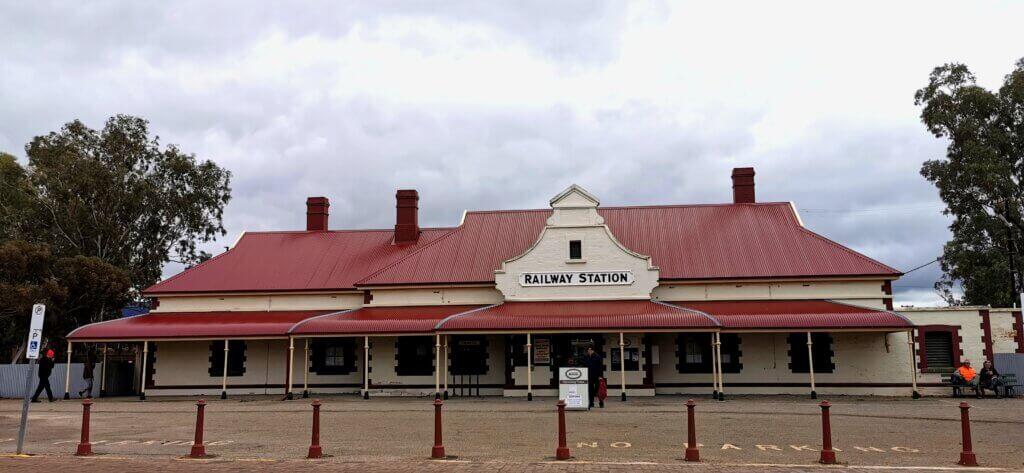
The final 42km session started with another small climb over the Pichi Richi pass before a fun decent (with a few short climbs that kept my legs from freezing). At one point we were fortunate to see the Pichi Richi Explorer, a tourist train that runs from Port Augusta up to Quorn on alternate weekends.
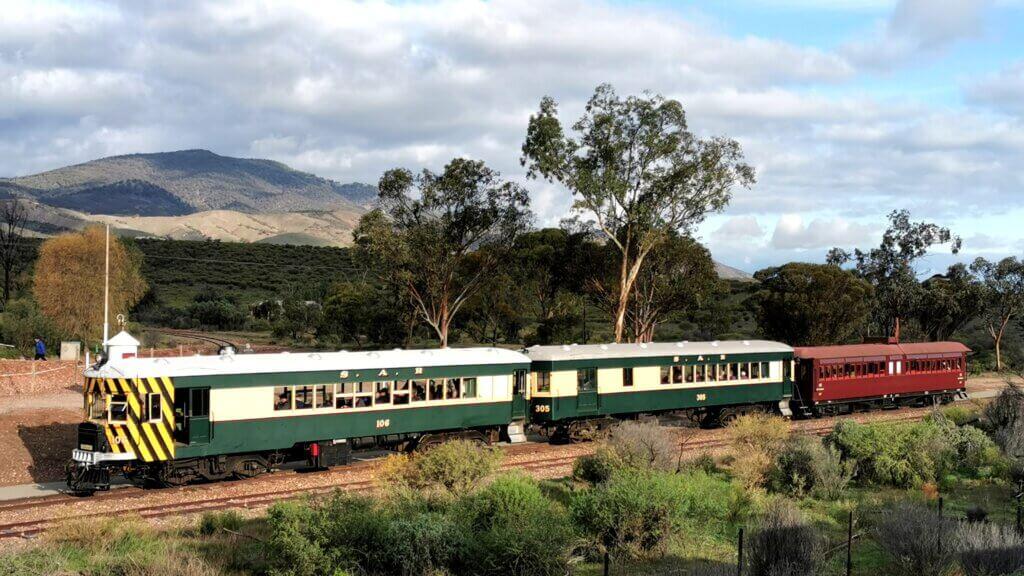
I finally descended all the way to the coastal plain, passing wind farms and into the city – the busy traffic a shock to the system!
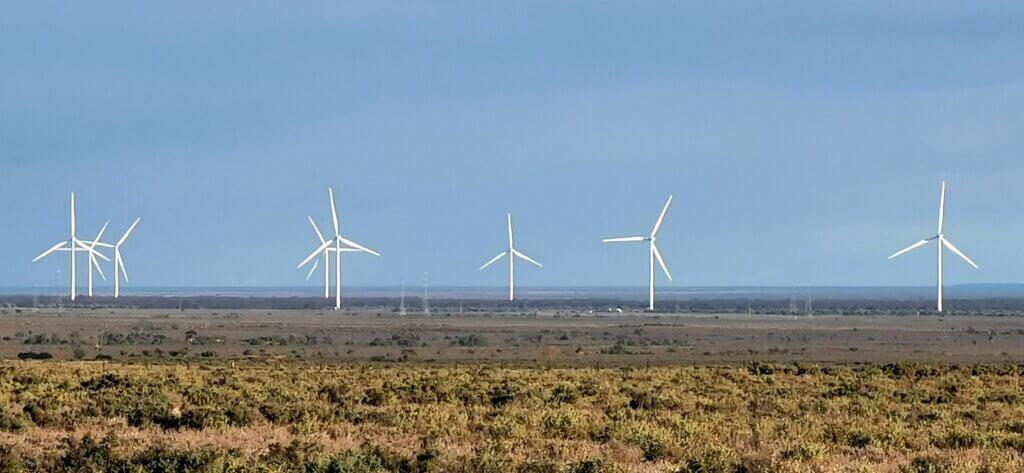
DAY 22 – Port Augusta to bush camp – 130km
The Stuart Highway is the main road across central Australia, joining Port Augusta to Darwin via Alice Springs. I have driven the 1200-odd kilometre tarmac strip before, but cycling it I quickly realised just how busy the road is. I had to remain alert the whole time as large trucks, road trains, cars towing caravans and 4WDs whizzed by. Still, I was able to average a good pace with my aim being to get this section done as quickly, safely and efficiently as possible.
Cycling at 20km an hour allows me to see the country with new eyes – it is quite a different experience and I always notice subtle changes and bond more closely with the changing landscapes.
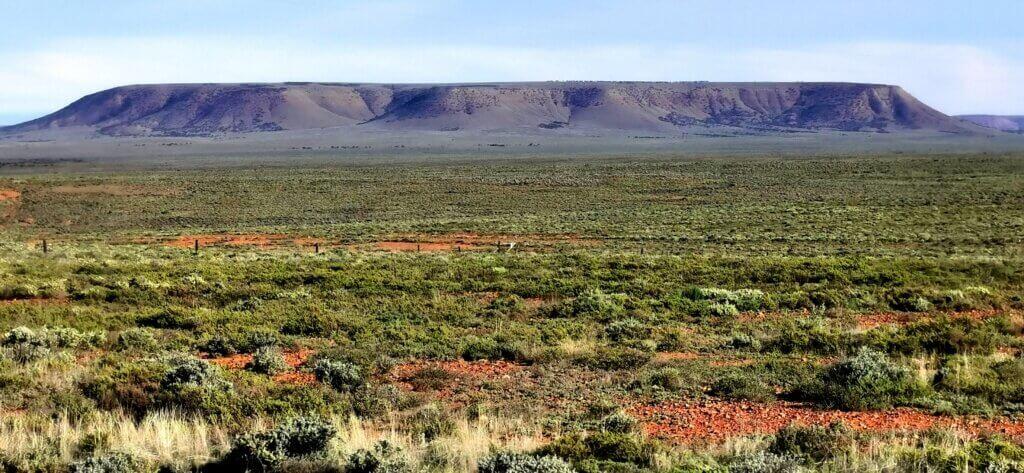
I climbed my first significant hill at 60km and linked back up with my team, who stayed Port Augusta to organise a few extra things and do the shopping before catching me up. It turned out to be a marathon day as I belted out a further 70km before we found an idyllic bush camp, well away from the highway.
DAY 23 – Bush camp to Woomera – 54km
The Stuart Highway condensed into a few quite steep hills on the way to Pimba, where I endured gradients of 5-6%. At Pimba I turned off the highway towards Woomera.
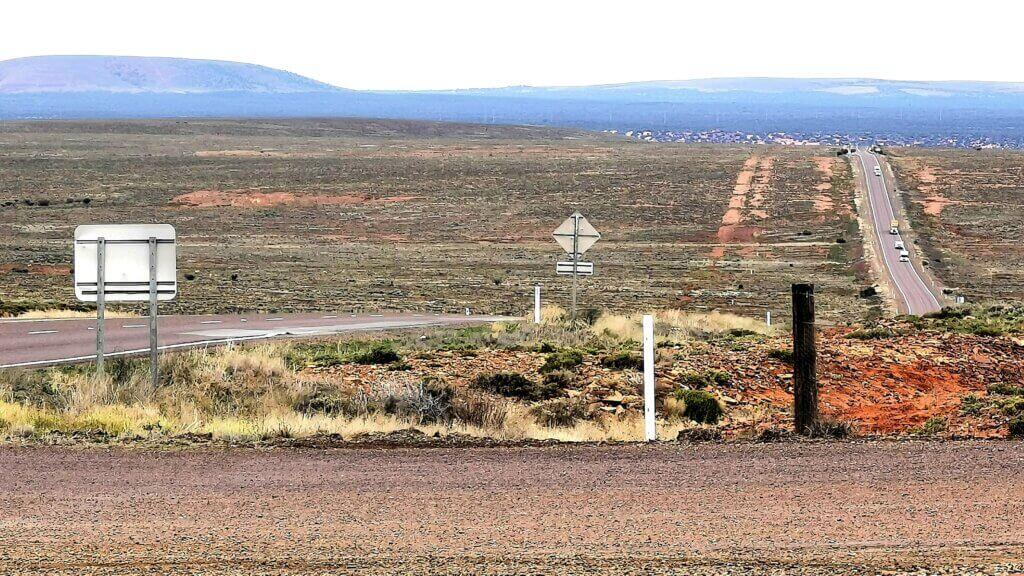
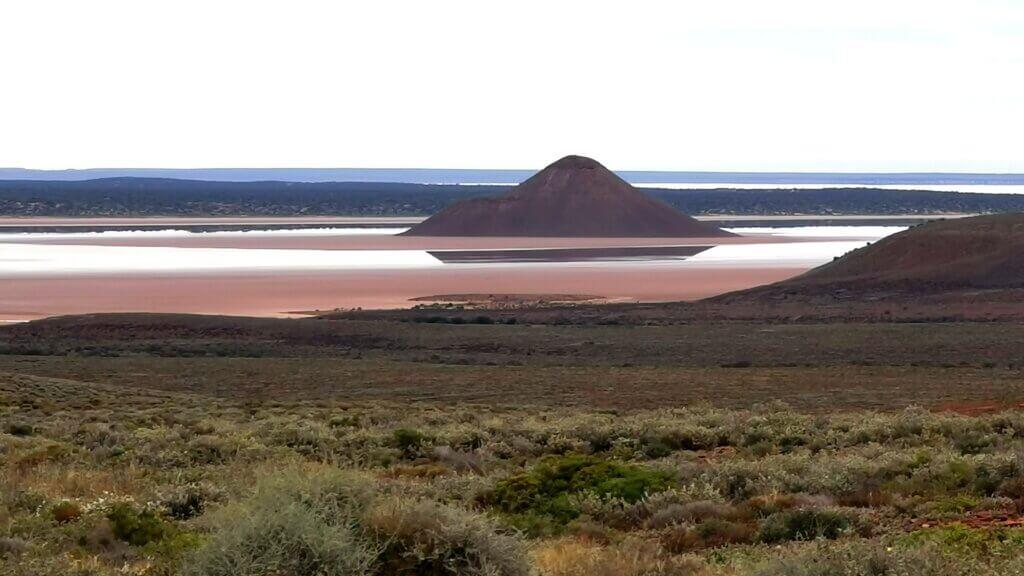
Once a closed town, Woomera was established under an Anglo-Australian joint project following the Second Word War. The Woomera Rocket Range along with the associated weapons research establishment at Salisbury (UK), were the largest and most expensive scientific and engineering activities ever conducted in Australia in peacetime. The equipment used and tested was at the forefront of technology, especially in fine mechanics, advanced optics, telemetry and rocket fuel chemistry. The successful launch of the WRESAT satellite from Woomera in 1967 gained Australia international recognition and membership of the exclusive “space club”.
